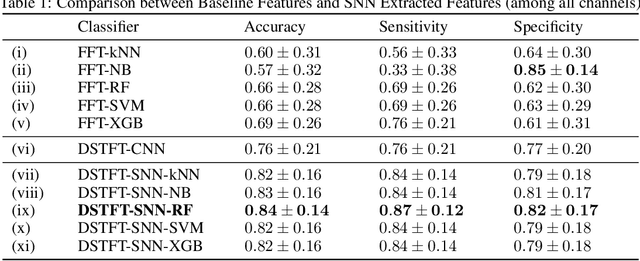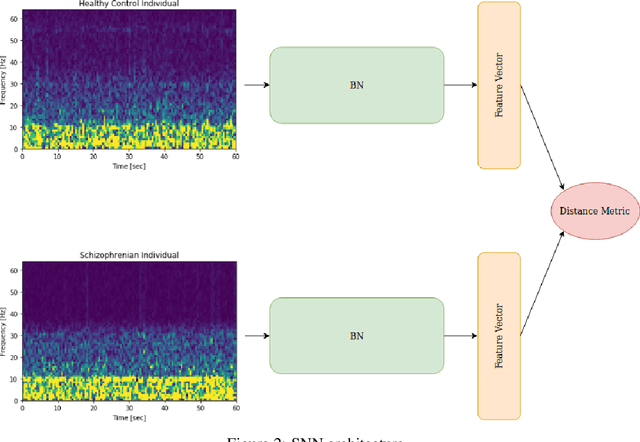Enrique Romero
Frequency selection for the diagnostic characterization of human brain tumours
Mar 11, 2025Abstract:The diagnosis of brain tumours is an extremely sensitive and complex clinical task that must rely upon information gathered through non-invasive techniques. One such technique is magnetic resonance, in the modalities of imaging or spectroscopy. The latter provides plenty of metabolic information about the tumour tissue, but its high dimensionality makes resorting to pattern recognition techniques advisable. In this brief paper, an international database of brain tumours is analyzed resorting to an ad hoc spectral frequency selection procedure combined with nonlinear classification.
Efficient Evaluation of the Partition Function of RBMs with Annealed Importance Sampling
Jul 23, 2020



Abstract:Probabilistic models based on Restricted Boltzmann Machines (RBMs) imply the evaluation of normalized Boltzmann factors, which in turn require from the evaluation of the partition function Z. The exact evaluation of Z, though, becomes a forbiddingly expensive task as the system size increases. This even worsens when one considers most usual learning algorithms for RBMs, where the exact evaluation of the gradient of the log-likelihood of the empirical distribution of the data includes the computation of Z at each iteration. The Annealed Importance Sampling (AIS) method provides a tool to stochastically estimate the partition function of the system. So far, the standard use of the AIS algorithm in the Machine Learning context has been done using a large number of Monte Carlo steps. In this work we show that this may not be required if a proper starting probability distribution is employed as the initialization of the AIS algorithm. We analyze the performance of AIS in both small- and large-sized problems, and show that in both cases a good estimation of Z can be obtained with little computational cost.
On the use of Pairwise Distance Learning for Brain Signal Classification with Limited Observations
Jun 05, 2019



Abstract:The increasing access to brain signal data using electroencephalography creates new opportunities to study electrophysiological brain activity and perform ambulatory diagnoses of neuronal diseases. This work proposes a pairwise distance learning approach for Schizophrenia classification relying on the spectral properties of the signal. Given the limited number of observations (i.e. the case and/or control individuals) in clinical trials, we propose a Siamese neural network architecture to learn a discriminative feature space from pairwise combinations of observations per channel. In this way, the multivariate order of the signal is used as a form of data augmentation, further supporting the network generalization ability. Convolutional layers with parameters learned under a cosine contrastive loss are proposed to adequately explore spectral images derived from the brain signal. Results on a case-control population show that the features extracted using the proposed neural network lead to an improved Schizophrenia diagnosis (+10pp in accuracy and sensitivity) against spectral features, thus suggesting the existence of non-trivial, discriminative electrophysiological brain patterns.
Stopping Criteria in Contrastive Divergence: Alternatives to the Reconstruction Error
Apr 09, 2014


Abstract:Restricted Boltzmann Machines (RBMs) are general unsupervised learning devices to ascertain generative models of data distributions. RBMs are often trained using the Contrastive Divergence learning algorithm (CD), an approximation to the gradient of the data log-likelihood. A simple reconstruction error is often used to decide whether the approximation provided by the CD algorithm is good enough, though several authors (Schulz et al., 2010; Fischer & Igel, 2010) have raised doubts concerning the feasibility of this procedure. However, not many alternatives to the reconstruction error have been used in the literature. In this manuscript we investigate simple alternatives to the reconstruction error in order to detect as soon as possible the decrease in the log-likelihood during learning.
 Add to Chrome
Add to Chrome Add to Firefox
Add to Firefox Add to Edge
Add to Edge